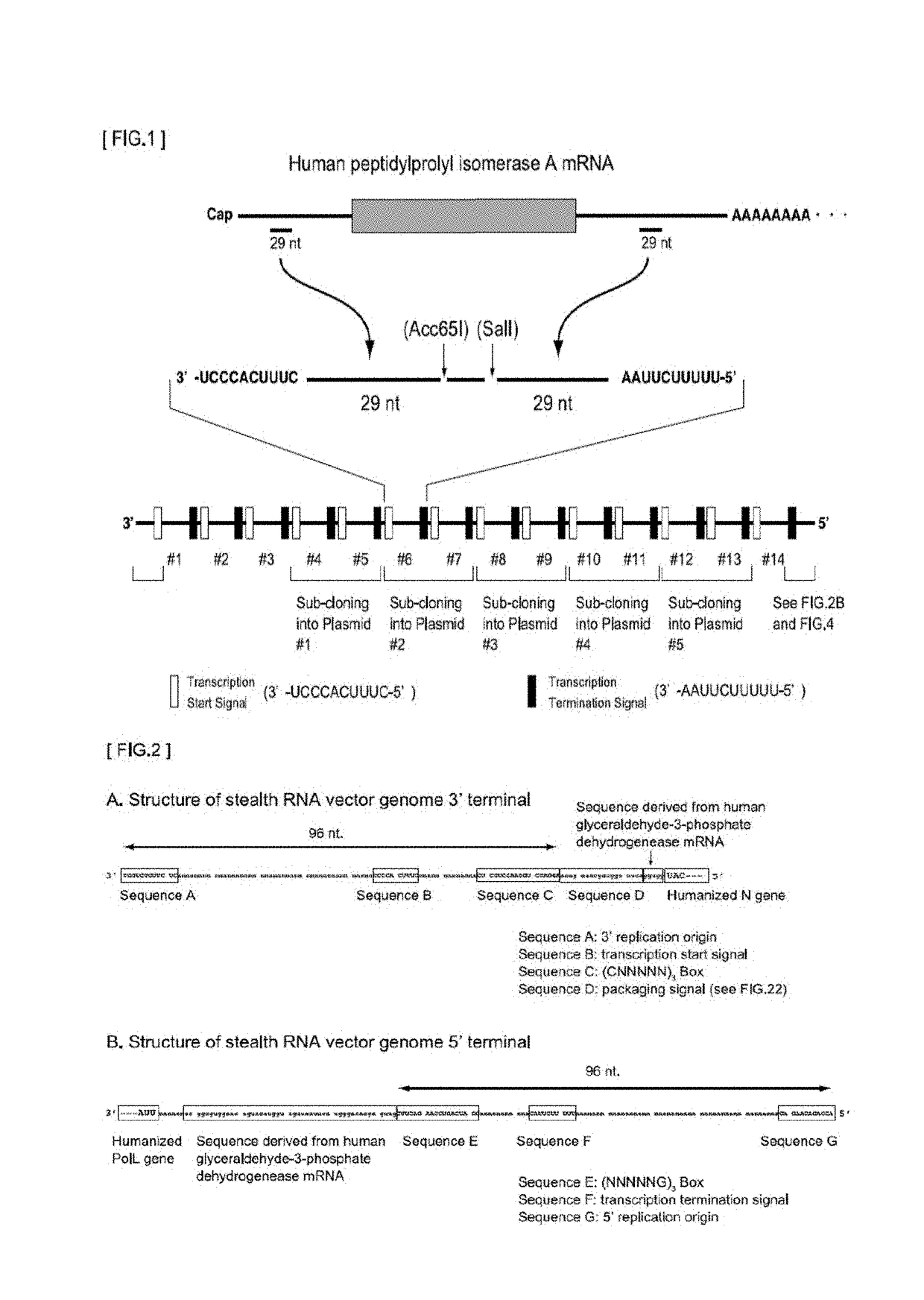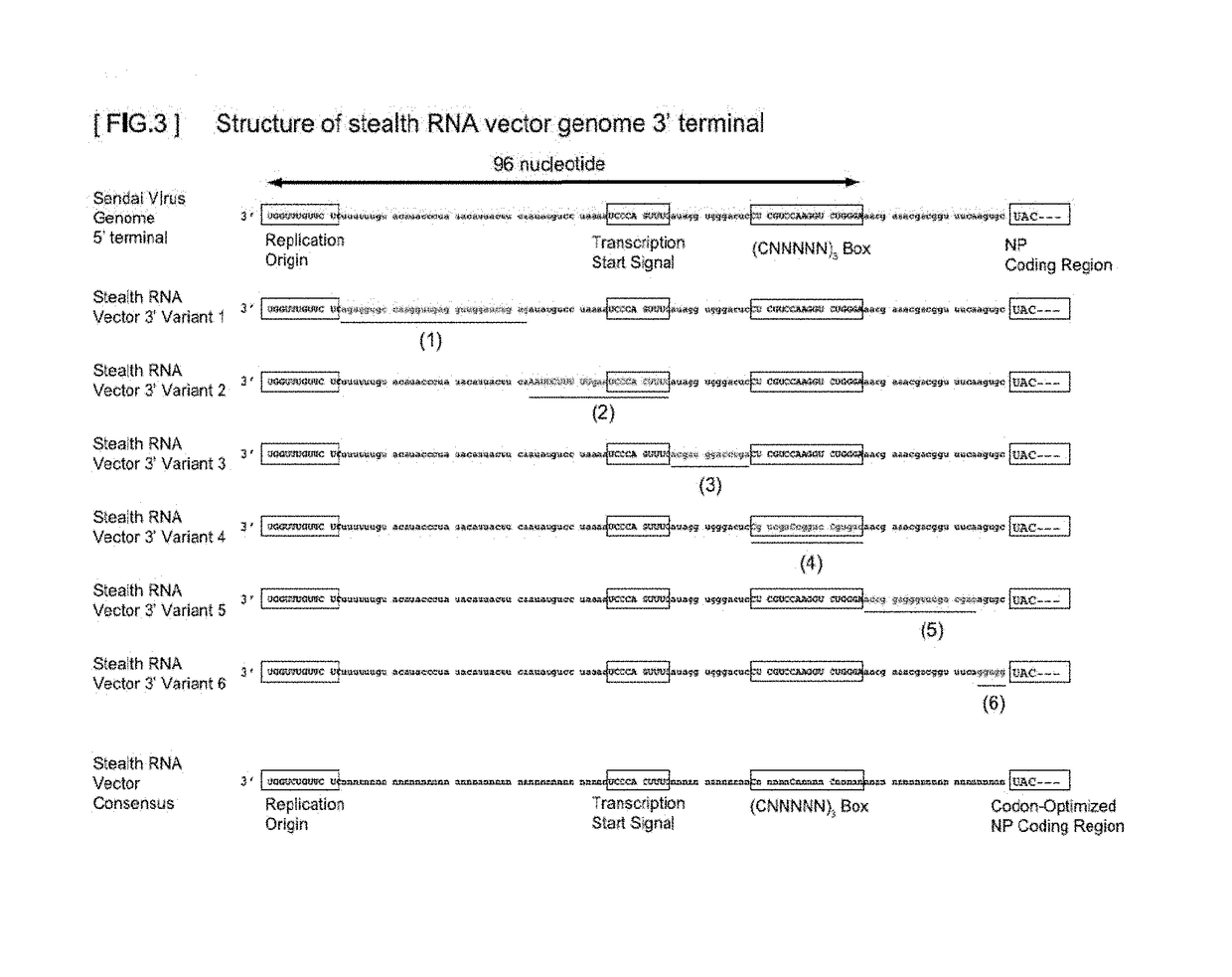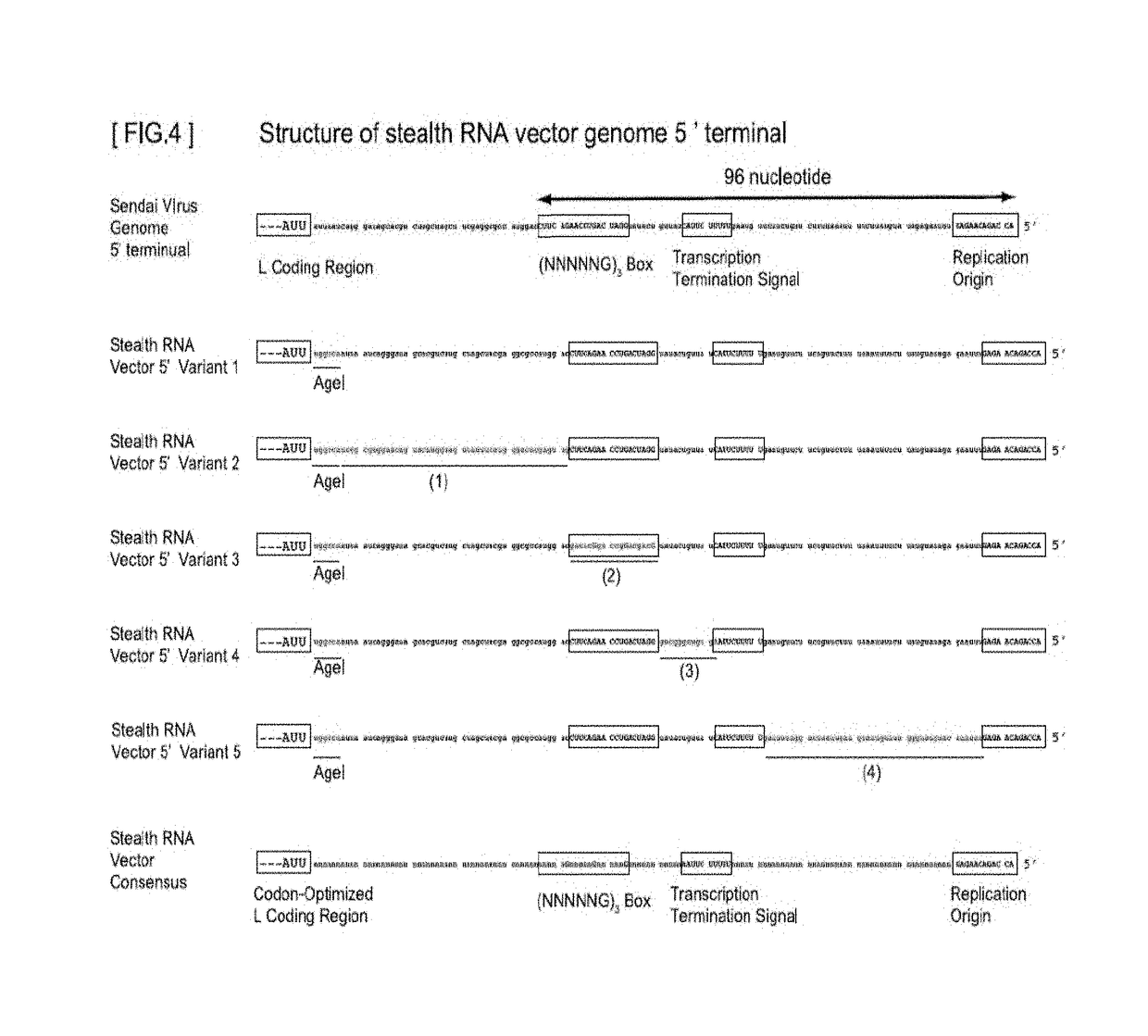Gene expression system using stealthy RNA, and gene introduction/expression vector including said RNA
a gene and gene technology, applied in the direction of transferases, genetically modified cells, fused cells, etc., can solve the problems of gene expression levels seriously affecting the characteristics of reprogrammed cells, unable to remove gene securely from every cell, and unable to achieve the effect of suppressing the activity of rna-dependent genes, low cytotoxicity, and easy removal
- Summary
- Abstract
- Description
- Claims
- Application Information
AI Technical Summary
Benefits of technology
Problems solved by technology
Method used
Image
Examples
example 1
Preparation of DNA Fragments Carrying Ten Exogenous Genes (1)
[0416]The following genes were amplified by PCR to have a structure of Acc65I-cDNA-XhoI and sub-cloned (FIG. 7).
[0417]1) Firefly luciferase: (GenBank Accession Number AY738224)
[0418]2) Renilla luciferase: (GenBank Accession Number AY738228)
[0419]3) Enhanced Green Fluorescent Protein (EGFP): (GenBank Accession Number U55761)
[0420]4) Puromycin resistant gene (synthesized while codons were optimized for human cells): Non-Patent Document 62, SEQ ID NO: 47
[0421]5) Cypridina noctiluca luciferase: Non-Patent Document 63 (GenBank Accession Number AB177531)
[0422]6) E2-Crimson: derived from pE2-Crimson (Clontech Laboratories, Inc), SEQ ID NO: 48
[0423]7) Enhanced Blue Fluorescent Protein 2 (EBFP2): Non-Patent Document 64 (GenBank Accession Number EF517318)
[0424]8) Zeocin resistant gene (synthesized while codons were optimized for human cells): Non-Patent Document 65, SEQ ID NO: 49
[0425]9) dKeima-Red: Non-Patent Document 66 (GenBank A...
example 2
Preparation of DNA Fragment Carrying Ten Exogenous Genes (2)
[0427]Next, the following plasmids were prepared.
[0428]All the nucleic acids used in the present Example are DNA fragments, and a sequence specified as a negative-sense RNA sequence in the sequencing listings such as SEQ ID NO: 1 or SEQ ID NO: 4 means a corresponding DNA sequence. This also applies to other Examples using a DNA fragment.
1) Plasmid #1
[0429]Between the ApaI cleavage site and the StuI cleavage site of plasmid LITMUS38i (New England BioLab, Inc), a DNA having the following structure is cloned: SapI cleavage site-attB1 (SEQ ID NO: 51)-SEQ ID NO: 1-SEQ ID NO: 24-Acc65I cleavage site-SalI cleavage site-SEQ ID NO: 25-SEQ ID NO: 4-ctt-SEQ ID NO: 1-SEQ ID NO: 26-BsiWI cleavage site-XhoI cleavage site-SEQ ID NO: 27-SEQ ID NO: 4-SapI cleavage site
2) Plasmid #2
[0430]Between the ApaI cleavage site and the StuI cleavage site of plasmid LITMUS38i, a DNA having the following structure is cloned: SapI cleavage site-SEQ ID NO...
example 3
Preparation of DNA Fragments Carrying Ten Exogenous Genes (3)(see FIG. 8)
[0434]Next, the following Plasmids were prepared.
1) Plasmid #1C
[0435]Between Acc65I-SalI of plasmid #1, an Acc65I-XhoI fragment containing firefly luciferase gene was cloned to prepare plasmid #1B. Further, between BsiWI-XhoI of plasmid #1B , a Acc65I-XhoI fragment containing Renilla luciferase gene was cloned to prepare plasmid #1C.
2) Plasmid #2C
[0436]Between Acc65I-SalI plasmid #2, an Acc65I-XhoI fragment containing EGFP gene was cloned to prepare plasmid #2B. Further, between BsiWI-XhoI of plasmid #2B, an Acc65I-XhoI fragment containing puromycin resistant gene was cloned to prepare plasmid #2C.
3) Plasmid #3C
[0437]Between Acc65I-SalI of plasmid #3, an Acc65I-XhoI fragment containing Cypridina noctiluca luciferase gene was cloned to prepare plasmid #3B. Further, between BsiWI-XhoI with plasmid #3B, an Acc65I-XhoI fragment containing E2-Crimson gene was cloned to prepare plasmid #3C.
4) Plasmid #4C
[0438]Between...
PUM
| Property | Measurement | Unit |
|---|---|---|
| Length | aaaaa | aaaaa |
| Length | aaaaa | aaaaa |
| Length | aaaaa | aaaaa |
Abstract
Description
Claims
Application Information
 Login to View More
Login to View More - R&D
- Intellectual Property
- Life Sciences
- Materials
- Tech Scout
- Unparalleled Data Quality
- Higher Quality Content
- 60% Fewer Hallucinations
Browse by: Latest US Patents, China's latest patents, Technical Efficacy Thesaurus, Application Domain, Technology Topic, Popular Technical Reports.
© 2025 PatSnap. All rights reserved.Legal|Privacy policy|Modern Slavery Act Transparency Statement|Sitemap|About US| Contact US: help@patsnap.com



